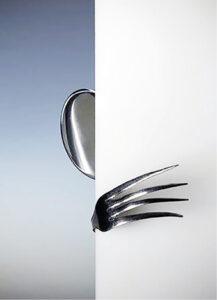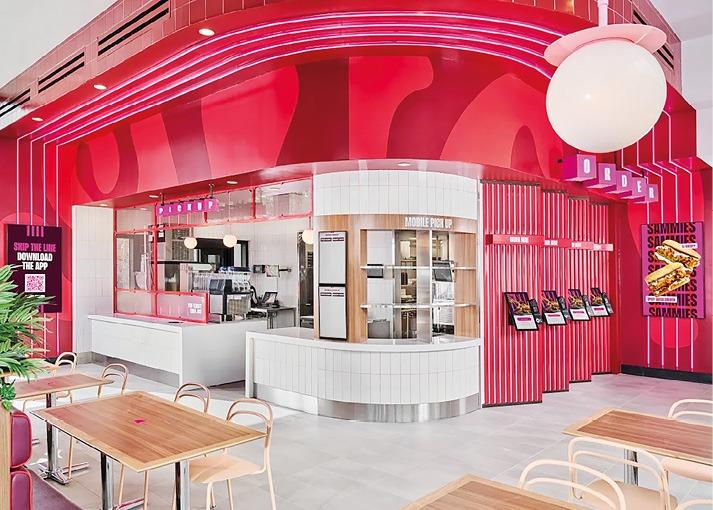Year of the Snake – expectations of the culinary sector
Chinese astrology expects life-changing events and great transformations in the Year of the Snake, in which it is worth paying attention to hidden opportunities. What is the restaurant world facing in 2025?
This article is available for reading in Trade magazin 2025/2-3.
As the global hospitality industry leaves behind a difficult period – it is just starting to recover from the economic and social shock of the pandemic – those who were able to repeat their 2019 performance last year can feel be lucky. According to experts, the number of restaurants decreased by 3-5 per day in Hungary, with fewer than 44,000 operating at the end of Restaurant owners also had to face difficulties such as anomalies in VAT rates or seemingly disproportionate data reporting tasks. However, we can be pleased to see that the overall quality of Hungarian catering is improving.

Too many Eskimos
If we can believe the Chinese, the Year of the Snake is all about adaptation – and there is a lot to adapt to! At the HoReCa day of our magazine’s Business Days conference last autumn, many experts said: there are too many restaurants and most of them don’t do development and marketing – the industry needs a bit of streamlining. According to METRO’s national survey from last year, the restaurant industry is rather optimistic, with nearly two-thirds reporting an increase in consumption and 60% planning to cut costs.
Eco-trends
In 2025 sustainable operation can no longer be avoided. It makes things easier for the sector that market competition is forcing suppliers – including the biggest brands – to prioritise sustainability. Some of the culinary trends linked to climate and environmental protection also offer opportunities for cost cutting, such as the use of local produce, generating less food waste and rationalistic energy use. The Year of the Snake will inevitably transform the hospitality industry, with positive changes being brought about by adapting to the changing economic situation and changing consumer demands.

Big chains are increasingly trying out spin-off concepts based on new trends: in January, KFC opened the first store of its Saucy chain in Orlando, promising a variety of sauces and gravies
Dining as an experience
Food and drinks are the most important elements in a restaurant’s operation, but the 21st century customer is also looking for experience and entertainment. Modern catering is often going in the direction of interactive, theme- and experience-based dining. Guests get more than just a lunch, a dinner or a cocktail: it is the individuality, the experience and genuine emotions that takes centre stage – these keep customers coming back. The reimagining of traditional dishes is nothing new, but the use of classic dishes with contemporary ingredients, and cooking with ingredients and technologies from international (Asian, Mexican) cuisines in the spirit of fusion cuisine is on the rise – this new trend is called newstalgia and is also driven by social media.
Living longer!
Luxury is back! In recent years “upscale” gastronomy has got rid of the lavish details and quality has become more affordable and democratic. The fine casual concept is spreading too, restaurants focus on fewer dishes, but these are prepared to the highest possible quality. By now people have understood: extending our life expectancy and improving the quality of our lives isn’t just a matter of external factors. Research shows that the more educated you are, the more you care about your health – and here we are talking about basically the same group of people who go to restaurants. Free-from and plant-based dishes now have a bigger place on restaurant menus. Dishes based on these are no longer just alternatives: they are becoming an important innovation direction and a field of creativity.

According to Taste Tomorrow’s AI-assisted research, there are 4 main consumer needs that are driving bakery trends: digestive health ingredients (high fibre, pre-, pro- and post-biotics), locally produced grains, the distinctive taste of sourdough and old and new versions of classic baked goods
The joy of eating
People are increasingly enjoying eating, they are experimenting, being creative and stick less to strict culinary rules. Social media, which is accelerating everything, is clearly not only influencing the tastes of customers but also helping chefs to learn and integrate new trends, and to find inspiration to create dishes that are easy to post on various platforms. According to Taste Tomorrow, one of the top trends in confectionery is the pairing of sweet ingredients with sour or piquant flavours to create a complex flavour profile. Consumers are looking for unusual flavour combinations, clashing textures and a mixture of cuisines from around the world. Generation Z and Alpha are popularising the culture of small bites. //
The world of drinks in 2025
For some time now the most creative shifts in the food industry have occurred in the world of alcoholic drinks. The drinking habits of young people are different from those of older generations, it is enough to mention the so-called zebra-drinking (the alternation of alcoholic and no-low drinks), which is a trendy way of reducing the amount of alcohol consumed in nightclubs.

Restaurateurs need to respond to this by expanding not only their no-low product range but also their mocktail selection. In the world of spirits there are more and more drinks offering classic dessert flavours. However, there is also a savoury countertrend: we can see vodka, ale and whisky-based cocktail consumption growing. The metamorphosis of spirits is another interesting trend – with consumers always looking for special experiences, brands are creating new drinks that cross categories, e.g. Monkey Shoulder’s Fresh Monkey is a blended grain spirit made from a selection of new spirits, designed to bridge the “gap” between rum and whisky. //
Related news
METRO Trading Ltd. recalled fishery products due to the presence of Listeria monocytogenes.
🎧 Hallgasd a cikket: Lejátszás Szünet Folytatás Leállítás Nyelv: Auto…
Read more >The largest food drive in the country’s history
🎧 Hallgasd a cikket: Lejátszás Szünet Folytatás Leállítás Nyelv: Auto…
Read more >METRO launches mission to preserve Hungarian gastronomy
🎧 Hallgasd a cikket: Lejátszás Szünet Folytatás Leállítás Nyelv: Auto…
Read more >Related news
THE LATEST ISSUE OF TRADE MAGAZINE HAS BEEN PUBLISHED!
🎧 Hallgasd a cikket: Lejátszás Szünet Folytatás Leállítás Nyelv: Auto…
Read more >Agroinform.hu: Three-quarters of fir tree buyers can decorate their homes with products from domestic producers again this year
🎧 Hallgasd a cikket: Lejátszás Szünet Folytatás Leállítás Nyelv: Auto…
Read more >István Nagy: the total output value and profitability of agriculture have also increased
🎧 Hallgasd a cikket: Lejátszás Szünet Folytatás Leállítás Nyelv: Auto…
Read more >







